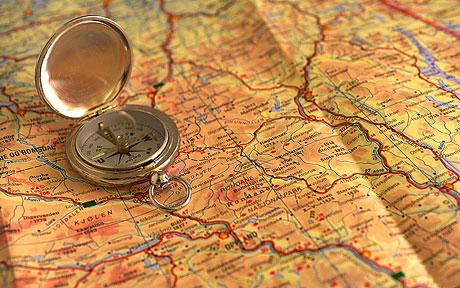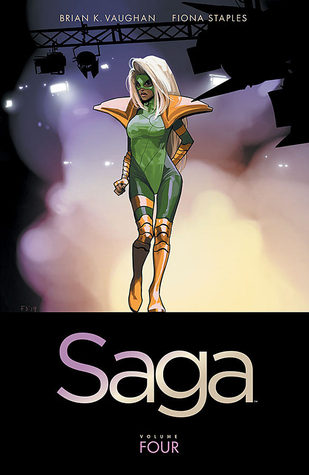
I spotted this reading challenge from Hard Book Habit, a fabulous book blog written by two voracious – and hilarious – readers. The idea of the challenge is to read 80 books set in different countries with at least one book set on each continent, one set on sea and one centered around travelling. I’ve for a long time been intrigued by all the reading diversely/across the world/the continents challenges, but this one seems like a perfect fit for me – a low-key challenge with a chance of learning! Reading 80 books for a challenge is quite a hefty task, so luckily there is no time limit for the journey. I assume it will take me more than one year to complete the challenge, two if I put my mind into it.
I got so excited about the challenge that I instantly started to compile a list of books I would like to read and that are either set or written in countries other than Finland, UK or USA (the top three countries according to my reading statistics and ones that I’ll most likely read many books for). I’ve made a shelf on my Goodreads to keep track of the books I read, and I’ll try to review each of them here using the tag #AW80Books. This post will serve as my travelogue/master post for the reading journey which I’ll update my as I go along.
Here’s a short list of some of the first destinations I hope to travel to:
AFRICA
Disgrace by J.M. Coetzee
Set in South Africa, the book follows an English professor in the post-Apartheid Cape Town. The lovely Kainzow recommended this one to me ages ago, so I think it’s the perfect starting point for a challenge like this.
Heart of Darkness by Joseph Conrad – READ
Set in Congo. A classic tale of the “white man’s burden” and an exploration of the deep human psyche. Perhaps not the right fit for this challenge. Although it highlights the racism in the Western perspective, it still falls to the pits of western blindness.
Things Fall Apart by Chinua Achebe – READ
Set in Nigeria. Almost a direct response to Conrad’s Heart of Darkness, Achebe’s tale of a Nigerian village life and the struggles of a successful fighter in the changing climate of colonization – both the good and the bad.
ASIA
In the Orchard, the Swallows by Peter Hobbs – READ
Set in Pakistan. A beautiful and poetic story of love, innocence, kindness and war. Hobbs has beautifully captured the sense of how the Afghan war has disturbed the life in the peaceful small communities.
The Corpse Exhibition And Other Stories of Iraq by Hassan Blasim – READ
Set in Iraq. Hassan Blasim began his writing career only few years after arriving to Finland, but he has already been named as one of the most exciting Arabic fiction writers alive (according to The Guardian). Considering he’s a bit of a local celebrity where I live, I think it apt to begin exploring the Middle East through his short stories.
The Strange Library by Haruki Murakami – READ
Set in Japan. A curious exploration of libraries, knowledge, education and the surreal magical realism of Murakami
The Vegetarian by Hang Kang – READ
Set in South Korea. The winner of Man Booker International Prize 2016. The Vegetarian follows one woman’s decision to give up meat and the reaction that this causes in her family. It’s a deeply upsetting and raw tale of a woman’s fight against oppression and patriarchal norms.
Crazy Rich Asians by Kevin Kwan – READ
Set in Singapore. The unbelievable high-life of rich Asians, the cattiness of a reality show and the strict codes of traditional families combined. An entertaining beach read!
The Unexpected Inheritance of Inspector Chopra by Vaseem Khan – READ
Set in India. On the day of his retirement Inspector Chopra discovers that he has inherited a baby elephant and encounters a crime no one wants to investigate. A feel-good detective novel with bits of insight on India.
EUROPE
A Whole Life by Robert Seethaler – READ
Set in Austria. The life story of a man living in the Austrian Alps: a tale of loneliness, changing time and search for meaning.
A Constellation of a Vital Phenomena by Anthony Marra
Set in Chechnya. This one I actually don’t know much about except that it is a blogger favourite and adored by many of the readers whose tastes often go hand in hand with mine.
Anna Karenina by Leo Tolstoy – READ
Set in Russia. This is one that I really really want to get to this year. Everyone who has read it loves it, so I cannot wait to tackle this and (hopefully) adore it as well.
A Man Called Ove by Peter Backman – READ
Set in Sweden. A heart-warming tale of an old grumpy man who hates the world and modern society, but is pulled out of his shell by his neighbours.
Estonian haiku poetry by Asko Künnap, Karl Martin Sinijärv, Jürgen Rooste – READ
Set in Estonia. A tiny collection of haiku poetry written in Estonian – which I read in Finnish translation. In few words: fascinating and very post-modern.
Miss Smilla’s Feeling for Snow by Peter Hoeg
Set in Denmark/Greenland, this book follows a woman investigating the mysterious suicide of a young boy from her neighbourhood. It’s one that remember reading an extract from ages ago and buying a copy a few years back with the intention of reading it soon. It’s high time to get on this.
My Brilliant Friend by Elena Ferrante – READ
Set in Italy. This is the first novel in the Neapolitan Quartet that follows two girls growing up in 1950s Naples, their friendship and aspirations as well as the society surrounding them.
Silent House by Orhan Pamuk – READ
Set in Turkey. Understated beauty of a family in the society at the brink of civil war. Aspirations for Western affluence, civilisation, love and acceptance, and terrible miscommunication between sisters and brothers.
AMERICAS
Down the Rabbit Hole by Juan Pablo Villalobos – READ
Set in Mexico, the book follows the young son of a drug cartel mafioso. Said to be quirky and Alice in Wonderland like, I’m looking forward to this foray into Mexican literature.
Fever Dream by Samantha Schweblin – READ
Set in Argentina. A short Lynchian novel about a conversation between a dying woman and a young boy trying to uncover what happened. A gripping read-in-one-sitting novel about motherhood and fear.
MISCELLANOUS
Compartment no. 6 by Rosa Liksom – READ
Set on the Trans Siberian Express. This book won the prestigious Finlandia prize in 2011. It’s by the Finnish author Rosa Liksom, who’ve I’ve been meaning to read for a looong time, and it’s also one that has been translated into English.
Around the World in 80 days by Jules Verne – READ
This one’s a re-read for me, because I read it the first time when I was twelve and then maybe again the next year. So it’s been over 10 years since I last read it! I haven’t touched any of Verne’s books as an adult, so I’m both interested and scared to see how I feel about them now. Might count this one as the one set on sea.
Let me know if you have any suggestions as to books/countries that I should check out – I’m especially curious about South America, since my knowledge of the literature from the continent is almost nonexistent. Also, if you’d like to participate, please do so! More details can be found from HardBookHabit. Happy reading! x








 Brave New World by Aldous Huxley
Brave New World by Aldous Huxley Citizen by Claudia Rankine
Citizen by Claudia Rankine Dept. of Speculation by Jenny Offill
Dept. of Speculation by Jenny Offill My Brilliant Friend by Elena Ferrante
My Brilliant Friend by Elena Ferrante A Little Life by Hanya Yanagihara
A Little Life by Hanya Yanagihara The Vegetarian by Han Kang
The Vegetarian by Han Kang Silent House by Orhan Pamuk
Silent House by Orhan Pamuk Where I’m Reading From by Tim Parks
Where I’m Reading From by Tim Parks







